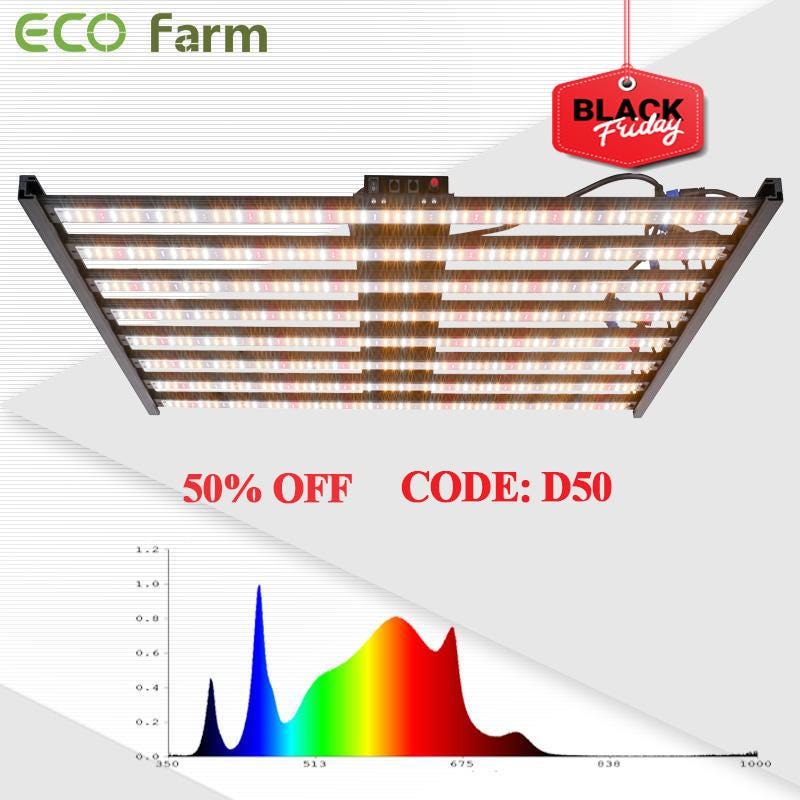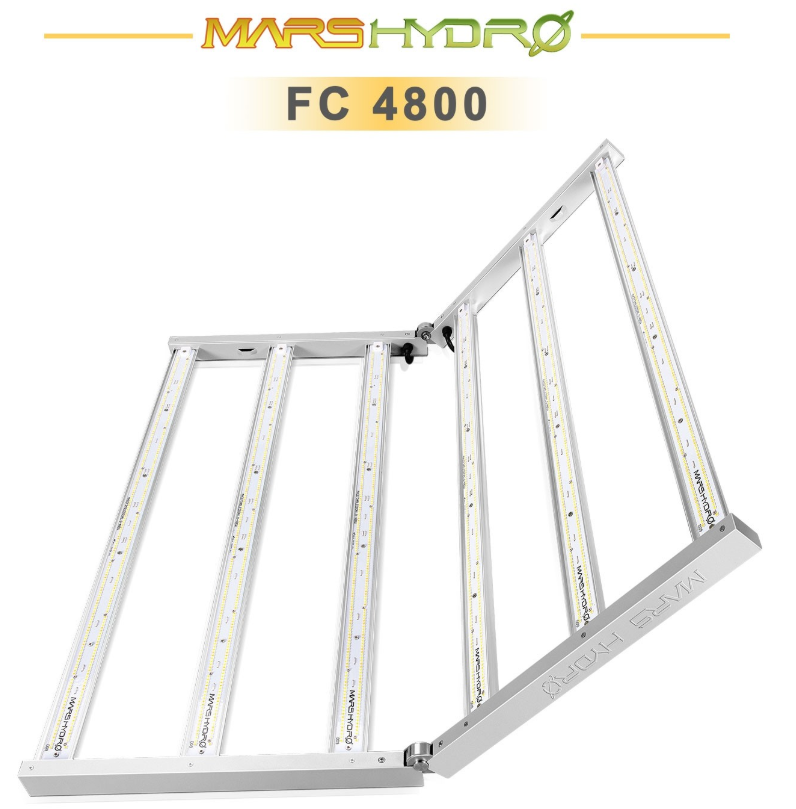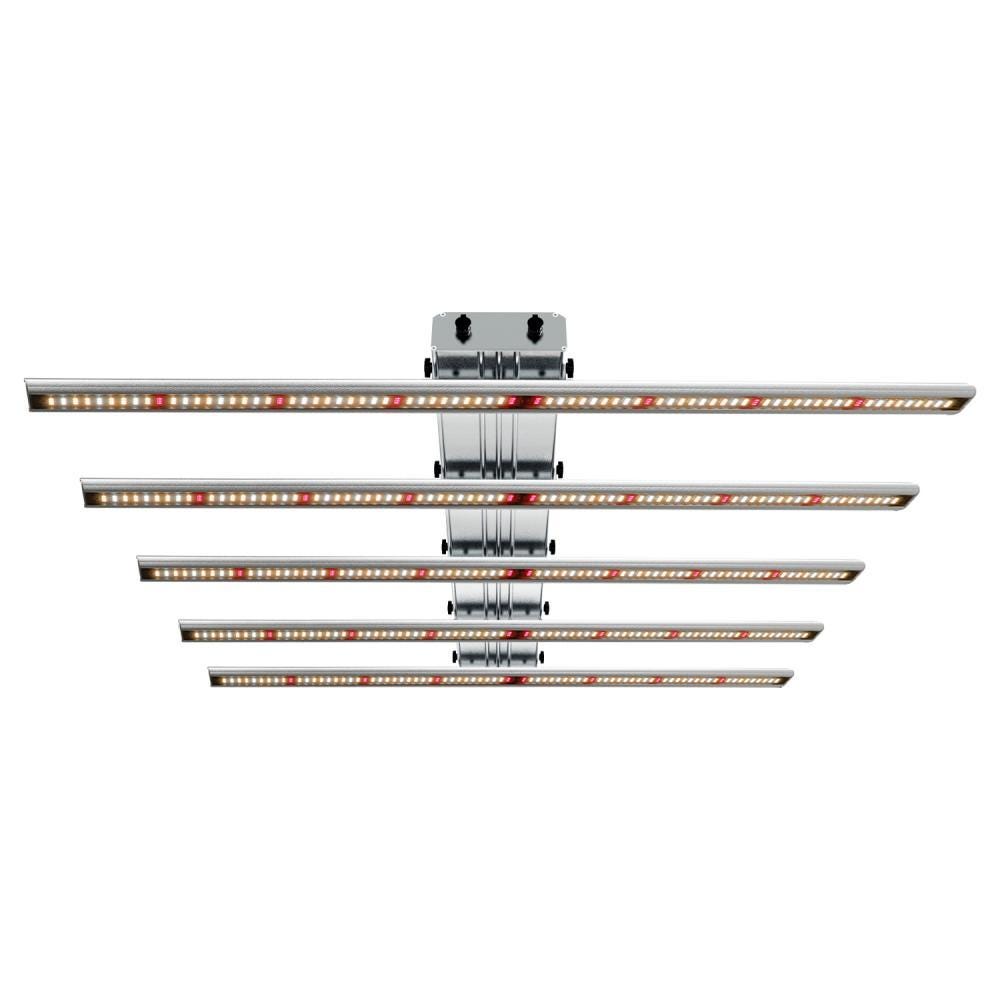How Does the Grow Light Affect Your Indoor Plants
Sufficient light is critical for the growth and production of plants. When growing plants, the rule of thumb is: 1% more light = 1% higher yield. The plant uses the energy contained in light for its growth and for the production of buds. The colour of the light and the length of the day (light period) also make a big difference to the growth. A good understanding of the effect of light on the plants is a prerequisite for anyone who deals with plants.
The Influence of Light on Plants
The major factors influencing a plant’s growth and development are genotype and the energy provided by light, along with environmental factors such as fertigation, and grow room environmental factors such as CO2, temperature, and humidity.
Electromagnetic radiation — light energy — is a stream of photons, with each photon containing a certain amount of energy. Ultraviolet light waves have more energy than visible light, which means they bump into more things and can cause more damage the shorter the wavelength (1). Within the visible spectrum, photosynthetically active radiation (PAR) describes the wavelengths that drive photosynthesis with wavelengths of 400–700 nm. Wavelengths outside of the PAR range (such as ultraviolet [UV] and far-red) affect plant development and phenotype, the set of observable quality characteristics resulting from the interaction of its genotype with the environment.
Light Intensity Matters Most
Light intensity — the number of photons — is most important to plants; the wavelength of the photons comes second behind intensity. Photosynthetic photon flux measures the total amount of PAR that is produced by a lighting system each second, and photosynthetic photon flux density (PPFD) describes the number of photons in the PAR range (photosynthetically active photons) that actually hit a given surface each second.
In cultivator studies comparing plants grown with light-emitting diode (LED) and high-pressure sodium (HPS) light fixtures in the flowering stage, plants respond similarly in yield if given the same PPFD. This is possible because, unlike humans, plants detect and react to changes in light intensity more finely than changes in spectral distribution. The light intensity can also be the solution to adverse morphological impacts of spectral treatments when too much of some photons can be a bad thing.
LED light fixtures are capable of producing more light than high-intensity discharge (HID) or fluorescent light fixtures, allowing plants grown with LED to receive higher PPFD levels, meaning plants can be grown in high-PPFD environments unattainable with other lighting technologies. Some LED fixtures may have higher PPF than the best performing double-ended HPS fixtures and can be mounted closer to flowering canopies than HPS lights to increase PPFD.
Many LED products are also dimmable, allowing for crucial modulation capability to limit output to match target PPFD without physically moving light fixtures, ramp up light levels while plants grow, and raise and lower intensity for smooth sunrise and sunset transition periods. A few LED manufacturers produce spectrally tunable lights that can modulate the number of photons from different wavelengths.
Best 480W LED Grow Lights Recommend
ECO Farm ECOD Samsung UV+ IR 480W Dimmable LED Grow Light

Features:
This ECO Farm full spectrum LED grow light was designed to help enhance photosynthesis so you can enjoy stronger and healthier crops! This linear horticulture lighting fixture produces a broad-spectrum lighting output made for Vertical Farming and indoor use. The premium LED growth light is an energy-efficient system that helps you to make important savings. You can make sure that this grow light system is a sustainable and eco-friendly solution for your garden. This LED growth light uses the aluminum housing material that is durable and reliable. It has a sturdy anodic oxidation finishing that will pass the test of time. This top growing light for plants uses broad spectrum LEDs that can enhance nutrient absorption. It has an IP65 waterproof design that is perfect for indoor use or greenhouses.
New Mars Hydro FC 4800 480W LED Grow Light

Features:
This FC4800 led grow light with Samsung LM301B & Osram 660nm Diodes, boast the incredible efficiency 2.8 µmol/J max 2.5g yield per wattage with 30% higher Average PPFD,achieve 50% higher yield & quality compared with the old lights! Only consumes 480W perfect light for 3x3ft of high-yielding full-cycle growth. High-intensity spectrum with enhanced red(3200–4200K,4800–5000k, 650–665nm) is perfect for veg to bloom, to adapt to each phase of the plant cycle. The dimming knob is ideal for growers to adjust the light intensity according to different growing stages. FC4800 dimmable grow lamp with daisy chain,allows you to connect up to 30 mars grow light to your commercial growing,horizontal and vertical farming,greenhouse planting,pipeline cultivation, hydroponics.
Phlizon PH-B6 480W LED Grow Lights Bars

Features:
Phlizon Full Spectrum Grow Bar has actual power draw of 480W. It is known for high power and stability. It has a higher brightness, smaller thermal resistance, less light attenuation and longer life as well as itself is a full spectrum design with high PPFD value which can promote faster and better plant growth. The entire Philzon BAR series is a full spectrum design meaning there is no need to change or switch between veg or bloom therefore this light contains every kind of light that plants need. And it provides plants Veg and Flower all stages with everything they desire in the natural sunlight. Incredible power at low operating temperature’s gives you more than double the par values per watt compared to traditional HID or HPS lighting. Simply eliminate the waste of supplying spectrums not needed for a plants specific growth cycle. Save even more money by no longer needing additional equipment.
What to look for in quality LED grow lights
Wattage
The wattage that you will need from your LED grow light largely depends on the size of your growing space. Some plants, namely flowering plants and vegetables, will need higher wattage per square foot of growing area, while low-light plants will require less.
Semiconductor chips
The semiconductor chip is what converts electricity into the light that your plants need. Without this vital component, your LED grow light simply won’t work. Because of this, be sure and pick out a LED grow light that has a quality semiconductor chip. LED grow lights with a good semiconductor chip will outlive those that lack one and save you money in the long run.
User-friendly LED grow lights
Aside from considering which grow light will work best for your indoor gardening space, consider how user-friendly the grow light is. Most LED grow lights have a few different settings and features that you should be able to switch between with ease.
Some LED grow lights can also be difficult to position or to keep in place. Be sure to assess if your space can accommodate a grow light before buying, especially if you are in the market for a larger LED grow light.
Conclusion
Light (and its energy implications) is one of the main limiting factors in hydroponics. The sun is a near limitless source of energy. Replicating it indoors is not easy. But the technology is evolving at a fast pace. We have grow lights that are more energy efficient than ever before. There is no reason not to expect a brighter future for indoor hydroponics. Hope you were “enlightened” by the contents of this post!
评论
发表评论